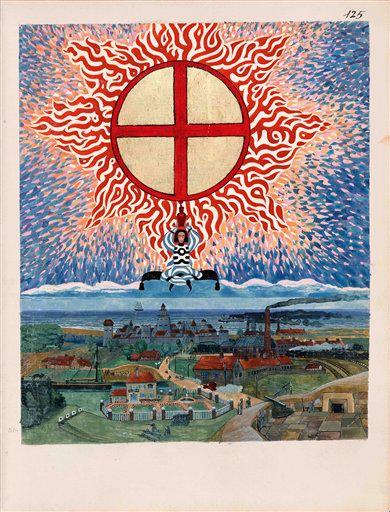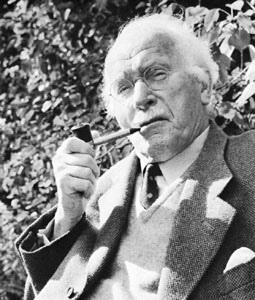Jung’s Beautiful Midlife Crisis
Carl Jung, one of the most influential psychologists of the 20th century, had his own very fraught and very formative ‘confrontation with the unconscious.’ He meticulously documented the experience. But his journals have remained unpublished and shrouded in mystery — until now. Bound as a single volume,The Red Bookwill be released tomorrow. And it could throw the door open on a whole new way to understand Jung’s life and work.
We know a little bit about what’s inside. The NY Times’ Sara Corbette explains:
What happened…to Carl Jung has become, among Jungians and other scholars, the topic of enduring legend and controversy. It has been characterized variously as a creative illness, a descent into the underworld, a bout with insanity, a narcissistic self-deification, a transcendence, a midlife breakdown and an inner disturbance mirroring the upheaval of World War I. Whatever the case, in 1913, Jung, who was then 38, got lost in the soup of his own psyche. He was haunted by troubling visions and heard inner voices. Grappling with the horror of some of what he saw, he worried in moments that he was, in his own words, ‘menaced by a psychosis’ or ‘doing a schizophrenia.’
Jung recorded his experiences in lots of little notebooks, later transcribing them into a single, leather-bound, red book. Yet Jung’s family famously squelched any request to publish the tome — and they believed they possessed the only copy of the work. But Sonu Shamdasani, an historian and Jung scholar, found parts of the book in Yale’s Beinecke Library, presumably made by Jung for review by his colleagues. Shamdasani presented these findings to the family. It took three years, but he gained their trust and was granted permission to edit, translate and publish the full work. As he told the NYT, he believes “once it’s published, there will be a ‘before’ and ‘after’ in Jungian scholarship…it will wipe out all the biographies, just for starters.”

The book is itself a visual masterpiece, written in elegant calligraphy with paintings of mythological figures, symbolic graphics, and colorful mandalas (on view beginning tomorrow at the Rubin Museum of Art in New York). As I browsed some pages, they reminded me of William Blake’s ecstatic illuminations in Songs of Innocence and Experience (1794). He, too, elaborated on his personal explorations with rich, sometimes disturbing illustrations, like an illuminated manuscript.
An interesting side note: the historian Shamdasani also dabbles in the arts. For nearly 20 years, he’s been a consultant for Enrique Pardo’s Paris-based Pantheatre, whose work explores, amongst other things, Jungian archetypes.
